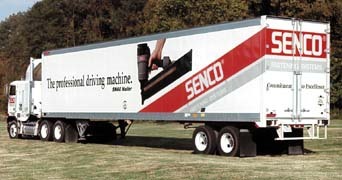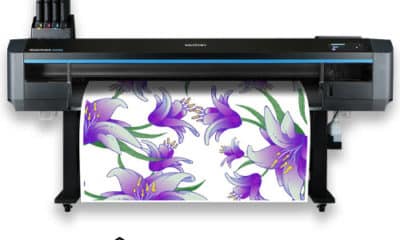When I worked in estimating and production planning for a large screenprinter, we established our selling prices on a "cost-plus" basis. This meant that we totaled burdened labor — an hourly rate that includes employees’ salary and benefits, shop overhead and other expenses. We then marked up burdened costs, defined as anywhere from 15% to 40%, taking our profit and the salesman’s commission into account. This system’s key advantage is that it covers your costs. When using a sliding commission scale, this system also encourages salespeople to sell at a higher price. Selling at 40% mark-up, a salesman would earn a 20% commission. However, a 15% mark-up drops the commission to 5%. While pricing on a cost-plus basis usually ensures that you don’t lose money, its major limitation is that, without consideration of prevailing market prices, you could leave a lot of money on the table. Other methods Pricing on a cost-plus basis isn’t the only way to set prices. For instance, I know two brothers who own a successful commercial-graphics business on Chicago’s South Side. They used another company’s published prices to set their selling prices. They believed that, if their cashflow at the end of their fiscal year was bigger than at the beginning, and if their return on investment equaled or exceeded their profit goals, they were smiling. How can you argue with success? Many shop owners use some variation of this approach when setting a selling price. Also, they often use the Sign Contractor’s Pricing Guide (available from ST Media Group Intl., Cincinnati, OH, (800) 925-1110, ext. 399) to estimate competitive pricing. To track market prices, an owner often asks someone to call his competitors for quotes. For quick quotes, one friend in the fleet-graphics business simply multiplied raw material costs and a labor cost estimate by five. His rationale was, if he operated at a 20% cost of sales, he wouldn’t get hurt. A few shops base their pricing on customer flow. When demand is high and manufacturing capacity low (i.e., fewer competitors and equipment), a shop can demand steadily increasing prices until business drops off. A friend in St. Louis recently suggested that, if you’re getting every job you quote, your prices are too low. He’s satisfied if he loses 20% of the jobs he quotes. He believes this figure represents "price-first" shoppers, who usually are the most demanding, slowest-paying customers. Shop and administrative costs Many market-driven pricing methods, such as those I’ve described, make good business sense if you’re covering your costs and making an acceptable profit. At the end of the day, however, you’ll never know if you made or lost money, unless you know your costs. Big businesses grow by understanding their costs and asking customers to pay their desired price. Keeping a handle on shop and administrative costs — also known as overhead — is essential for establishing a burdened shop rate or hourly labor rate. Shop and administrative costs comprise everything that isn’t charged directly to a job. In other words, it includes everything except the raw hourly labor cost, raw material costs and the other direct costs, such as special charges for dies, outside artwork, and printing and laminating costs. This includes your salary (you’re paying yourself a salary, aren’t you?), plus managerial salaries and clerical wages. Also, factor in utility costs, payments on loans, rent or mortgage payments, depreciation on capital equipment, and the cost of office and shop supplies that aren’t used as raw materials (Table 1). The sum of these costs is your monthly shop and administrative cost. Your accountant or bookkeeper can readily provide this information. These expenses will also appear on your company’s income statement. Because costs and productivity change over time, tracking these costs is critical, especially if your business is growing rapidly. I know of one fast-growing company whose monthly overhead increased from $50,000 to $85,000 in three years.
Determining productivity The next step is totaling your hourly employees’ available monthly production time. If you keep accurate records, you should know your shop’s productivity or the percentage of hours actually spent on saleable graphic programs. This doesn’t include time spent on rework, which falls into the returns and allowances category. If you’re not keeping records of time charged to jobs, start. All the graphics companies that I’ve worked for have used a tracking system, including labor tickets, on which employees were required to fill out listed hours spent on a particular task. At the end of each week, I totaled the chargeable hours. Maintaining accurate records is essential if you plan to track actual direct expenses against your estimate following the job’s completion. Labor and material tickets (listing actual material used on a job), the estimate, production order, copies of design art, vinyl swatches, color matches and copies of receipts for other direct expenses should be kept in a job folder. Chargeable hours are used to calculate a burdened shop rate — $50 per hour would be a typical example — which is figured into the estimate. Chargeable hours can be totaled from labor tickets, or estimated using your shop’s average productivity rate. As an example, suppose that your potential monthly labor totals 500 hours, and the average productivity is 60%. As such, your productive shop time is 300 hours. Any raw labor cost not charged against a job should be charged to shop and administrative costs. For instance, the staff may use 40% of 500 potential labor hours per month — or 200 hours — sweeping the floors, maintaining equipment, answering the phones, etc. That raw labor cost is added to the overall shop and administrative expense, along with rent, lease payments, office supplies, etc. Next month, we’ll closely examine burdened shop rate, profit margin and close-outs.


 Business Management1 week ago
Business Management1 week ago
 Women in Signs1 week ago
Women in Signs1 week ago
 True Tales2 weeks ago
True Tales2 weeks ago
 Editor's Note5 days ago
Editor's Note5 days ago
 Maggie Harlow2 weeks ago
Maggie Harlow2 weeks ago
 Line Time1 week ago
Line Time1 week ago
 Product Buying + Technology7 days ago
Product Buying + Technology7 days ago
 News2 weeks ago
News2 weeks ago















